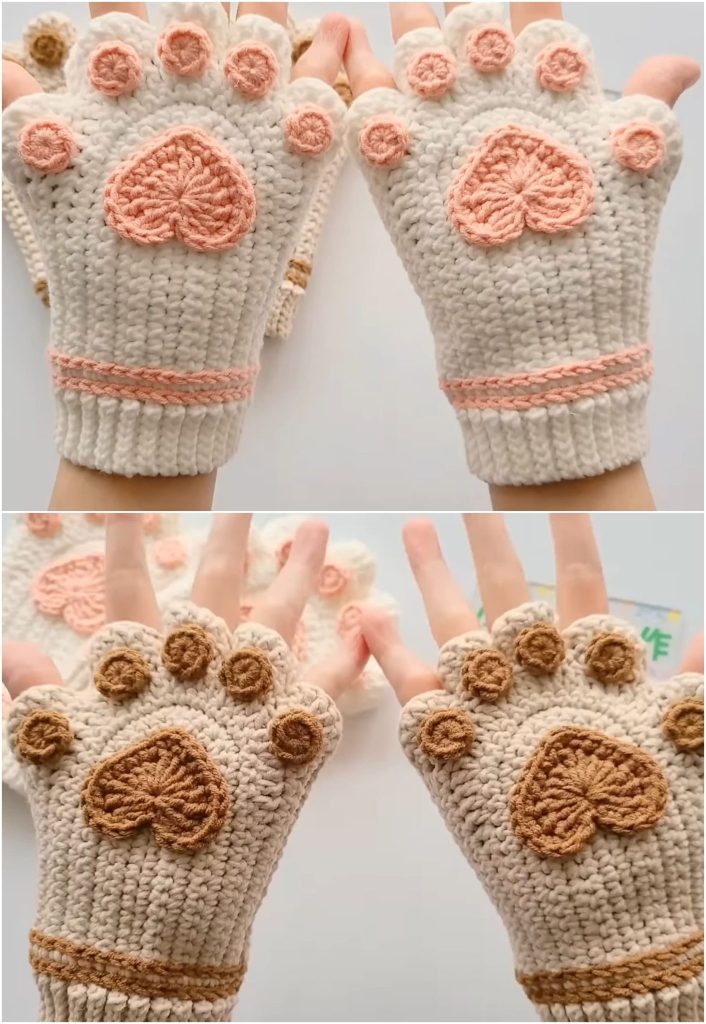
The Easy Shell Stitch is a delightful and versatile pattern that every crochet enthusiast should learn. Whether you’re a beginner or someone looking to add a charming texture to your projects, this stitch offers a simple yet elegant solution. In this guide, we’ll walk you through everything you need to know to get started with the easy shell stitch, from basic techniques to creative applications.
The easy shell stitch stands out for its unique, scallop-like pattern that brings softness and sophistication to any crochet piece. It’s ideal for making baby blankets, scarves, shawls, and even garments like cardigans. The stitch pattern repeats quickly, making it perfect for relaxing, meditative stitching sessions.
This tutorial not only teaches the stitch but also provides insights into using it effectively in different projects. We’ll explore tips to improve your tension, enhance your color transitions, and maintain a consistent texture throughout your work. So grab your hook and yarn, and let’s dive into the comforting rhythm of the easy shell stitch.

The easy shell stitch is a classic crochet technique that involves working multiple stitches into the same space to form a fan or “shell” shape. This creates a textured, wave-like effect that’s pleasing to the eye and soft to the touch.
The stitch usually involves a series of double crochets (dc) worked into a single stitch or space, with chains or single crochets separating each shell. It’s often used in rows or rounds and can be easily adapted for different widths and lengths, making it one of the most flexible techniques in crochet.
What makes this stitch so appealing is its simplicity. Even beginners can master it quickly while still producing professional-looking results. There’s no need for complex counting or difficult shaping—just a repeat of easy steps that lead to stunning designs.
You’ll often find the easy shell stitch in vintage patterns, but it’s just as relevant today. Modern crocheters use it in a wide range of creations, from decorative throws to trendy crop tops. Its timeless appeal ensures it remains a staple in every crochet lover’s toolkit.
Beyond aesthetics, this stitch is also functional. The layered texture provides warmth and durability, making it ideal for winter accessories and cozy home décor items.
The shell stitch’s visual flow creates a rhythmic experience, both for the crafter and the viewer. The result is a project that feels just as good to make as it does to use.
To begin with the easy shell stitch, you’ll need some basic crochet skills, particularly how to chain, double crochet, and single crochet. Once you’ve got those down, you’ll be creating shell patterns in no time.
Start with a foundation chain in multiples of 6 plus 2. This setup gives your project the correct spacing to form evenly distributed shells across the row. The additional 2 chains allow for proper edge alignment and a cleaner finish.
In the first row, you’ll typically make a single crochet in the second chain from the hook, skip two stitches, and then work five double crochets into the next stitch—this forms your first shell. Continue the pattern by skipping two stitches, then single crocheting into the next. Repeat this across the row.
The second row and beyond will build upon the shell pattern. You’ll make shells in the single crochets from the previous row, and single crochets in the center of the shell groups. This keeps your pattern aligned and ensures a consistent texture.
Don’t forget to count your stitches often to maintain symmetry. Even a small error in the pattern can throw off the visual balance. Keeping track ensures a polished final product and reduces the need for undoing and reworking.
Using markers can also help you track shell starts and ends, especially in large projects. They’re an excellent tool for beginners to stay organized and confident as they progress through their crochet journey.
Finally, always block your finished work to even out the tension and make the shell pattern stand out beautifully. Blocking gives your item a more professional look and helps the stitch detail shine.
The easy shell stitch is perfect for adding elegance to a variety of crochet projects. One of its main advantages is that it works well with most yarn weights and textures, from soft cotton to bulky wool.
When creating baby items like blankets or hats, opt for softer yarns. The shell pattern adds a delicate flair that’s perfect for baby gifts and nursery décor. Choose pastel colors or soft neutrals to enhance the gentle effect of the shells.
For scarves and shawls, try combining different yarn colors within your shell rows. This adds visual interest and allows you to play with color gradients or even rainbow effects. The stitch’s natural curves make color changes look seamless and artistic.
In home décor, the easy shell stitch brings texture to pillows, throws, and even wall hangings. Use earth tones for a rustic look or bold colors for modern interiors. Its structure also makes it an excellent choice for adding borders to plain blankets.
When making garments like tops or cardigans, it’s important to swatch and block before committing to full rows. The shell stitch creates some stretch and drape, which is ideal for airy, comfortable clothing pieces.
Consider pairing shell stitches with other crochet techniques like granny squares or mesh panels. This combination adds depth and variety to larger projects, giving them a designer-quality finish without complex instructions.
Lastly, if you’re making a pattern for others to follow, clearly indicate the stitch count and row repeats. This helps other crafters easily replicate your design, especially if they’re also beginners exploring the easy shell stitch.
Even though the easy shell stitch is beginner-friendly, it’s normal to encounter a few bumps along the way. One of the most common issues is miscounting stitches, which can offset your shells and cause an uneven edge.
To avoid this, double-check your pattern instructions and count your stitches at the end of each row. If the pattern starts to look off, it’s often better to go back a row rather than continue with a mistake that could compound.
Another frequent problem is inconsistent tension. This can make your shells look uneven or cause the fabric to ripple in unintended ways. Try to maintain the same level of tension throughout each stitch and row.
If your shells appear too tight or bunched, consider using a larger hook size. This will loosen the stitches slightly and allow the shell pattern to open up more naturally.
On the other hand, if your project feels too loose and lacks structure, switch to a smaller hook or use a tighter tension. Finding the right balance takes practice, but it’s crucial for achieving a neat, uniform look.
Sometimes beginners have trouble identifying where to place the stitches in the following row. Markers or contrasting yarn can help indicate the single crochets between shells, making it easier to stay on track.
Lastly, remember that crochet is an art, not a race. If you make a mistake, see it as an opportunity to learn. The easy shell stitch is very forgiving, and even imperfect shells can add character to your work.
1. What type of yarn is best for the easy shell stitch?
Worsted weight or DK yarns work wonderfully, but you can use any yarn depending on your project. Softer yarns are ideal for baby items, while textured or multicolored yarns create beautiful effects in scarves and throws.
2. Can beginners learn the shell stitch easily?
Yes! The easy shell stitch is perfect for beginners. If you know how to chain, single crochet, and double crochet, you’re ready to start creating shell patterns.
3. How do I fix a mistake in my shell stitch project?
If you notice the error early, it’s best to unravel just the affected rows. Use stitch markers and counts to avoid repeating the same mistake.
4. Can I use the shell stitch in the round?
Absolutely. The easy shell stitch can be adapted for circular projects like doilies, coasters, and round rugs. Just ensure your increases are evenly spaced.
5. Is blocking necessary for shell stitch projects?
Blocking isn’t required but highly recommended. It helps define the shells and gives your finished piece a more polished and professional appearance.
6. How can I add variety to my shell stitch patterns?
Experiment with color changes, stitch height variations (like treble crochet), or combining shell stitches with other textures such as mesh or lace.
The easy shell stitch is a beautiful, beginner-friendly pattern that adds elegance and texture to a wide range of crochet projects. Whether you’re making cozy blankets, stylish accessories, or home décor items, this versatile stitch offers both form and function.
We’ve explored how to create the stitch, tips for integrating it into your work, and ways to troubleshoot common issues. Now it’s your turn to bring this technique to life with your creativity and personal touch.
If you found this guide helpful, please leave a sincere opinion or share your suggestions in the comments below. We love hearing how our tutorials help you grow in your crochet journey. Happy crocheting!
